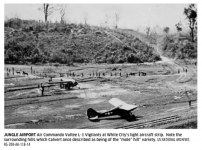- Reaction score
- 7,376
- Points
- 1,160
I'll respond to this here so as to not further derail the C3 Replacement thread.
I think that we differ on how we envision the role of the Light Battalions. You seem to see them as raiders swooping in unexpectedly to strike where least expected. For these roles the ultra-light vehicles, aircraft and weapons you propose make sense for these types of distributed operation. In my opinion that is the role of CSOR rather than the Light Battalions.
To me, the role of the Light Battalions is to provide a force that can respond more quickly than our our heavier forces, or can operate more effectively in complex terrain where our LAVs aren't effective. Yes the Light Battalions need to trade protection for mobility to achieve their goals but they also need to arrive with enough "weight" (ammo, support weapons, numbers) to be able to effectively defend against heavier enemy forces.
For me then I'd look instead for vehicles that can transport a Section with their gear (and be mounted with support weapons with enough ammo to fight a heavier enemy) rather than Fire-Team sized ultra-light vehicles. So to me I'd look at a Bv-series/Bronco or JLTV or Infantry Squad Vehicle (ISV) class of land vehicle and a Medium Lift Utility Helicopter along the lines of a UH-60, AW-101 or one of the FVL contenders rather then a swarm of Griffons or other light helicopters.
My philosophy would be to purchase a proven, reliable, relatively common vehicle/aircraft - preferably one in service with the US or our other major allies - that will effectively carry an infantry Section and their gear, can be customized to mount a variety of support weapons/roles (indirect fire, UAV/Loitering Munitions/ATGMs/SHORAD/Ambulance/Command/Cargo, etc.) and is relatively simple to maintain. Let CSOR focus on the ultra-light, raiding end of the spectrum which is better suited to Company Group operations likely anyway.
The primary point of clarification: I don't see Light Battalions as dedicated raiders. I do see them as being able to conduct raids. Everyone should be able to conduct raids. Artillery raids are a thing.
I do see the Light Battalions as being able to deploy quickly AND HOLD. I do see the Light Battalions as being able TO SUSTAIN operations in complex terrain.
I don't think it is necessary for the infantry battalion on the ground to go in with a Wagon Train with a months worth of supplies when it should be able to rely on those supplies being pushed forwards by its supporting arms. It should be able to rely on rounds on target delivered by the arty's guns and rockets, the air force's helos and aircraft and whoever is going to take responsibility for operating intelligent munitions that have no pilots.
If there is one image that defines the Light Infantry to me it is this one

This is White City in Japanese occupied Burma. Originally held by the Chindits. The Chindits, although Special in their day, were replaced by line infantry battalions from all over the British world once the Specials proved that the Japanese could be beaten in the jungles and were not 10 feet tall.
The infantry was supplied by air with air crews of various nationalities. They did not possess their own supply system. They had to rely on their support.
They were operating in terrain where neither they, nor the Japanese, could make effective use of tanks.

Royal Welch Fusiliers Burma December 1944
Burma was no raid.
One of the longstanding discussions on this site is the utility of the Battle Group vice the Brigade Group and whether Battalions should train independently or as part of the Brigade.
Perhaps the lack of Brigade training is a problem. Perhaps it encourages the battalion to look inwards to solve its problems rather than looking outwards and learning to trust its allied, supporting arms.

